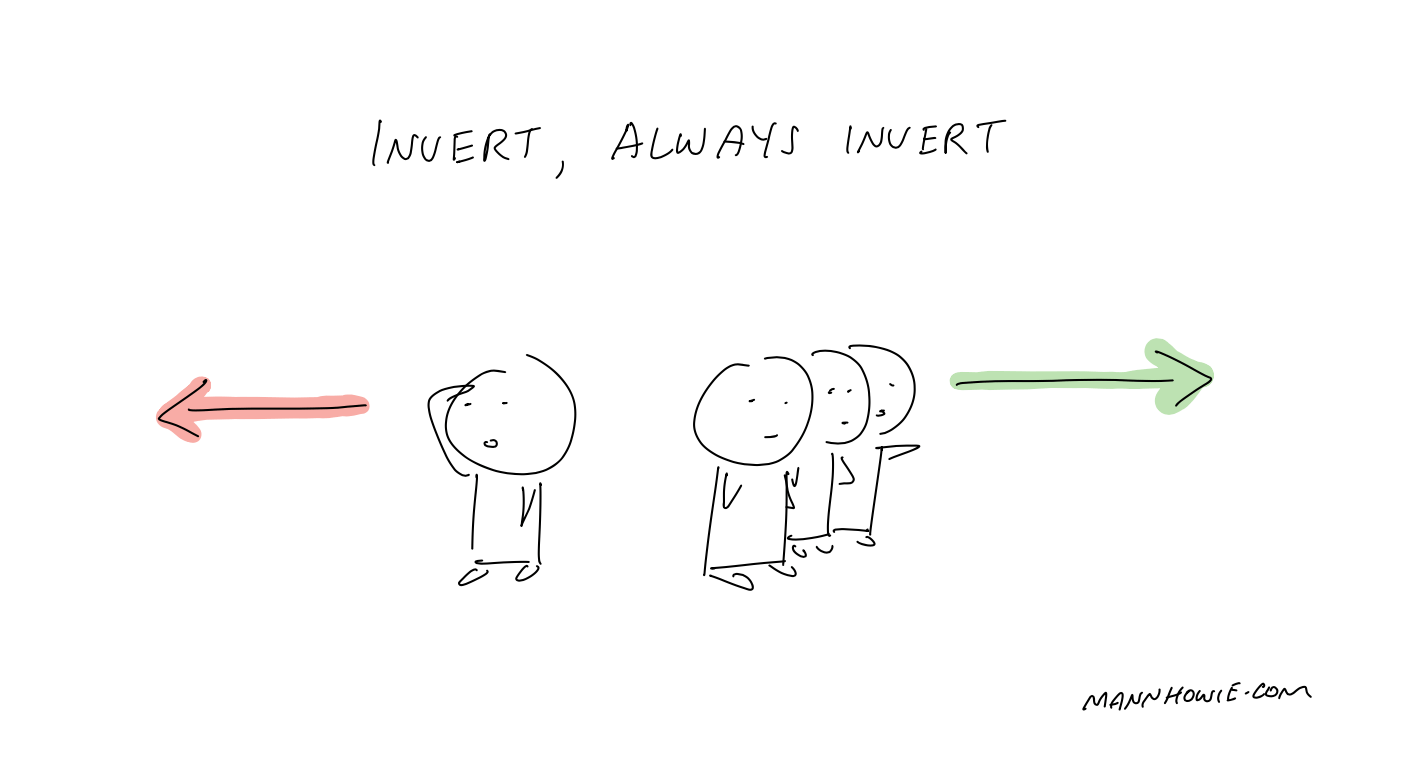Invert, Always Invert - Find out how to kill pilots
4 minute read | Aug 7, 2021
product, management
Inversion is a mental model of framing a problem from an opposing objective in order to solve the original problem.
 It is a favourite trick of famous value investor Charlie Munger. He gives an example of how the inversion process helped him in his early career become a better meteorologist:
It is a favourite trick of famous value investor Charlie Munger. He gives an example of how the inversion process helped him in his early career become a better meteorologist:
“When I was a meteorologist in World War II, they told me how to draw weather maps and predict the weather. What I was actually doing was clearing pilots to take flights.
I just reversed the problem. I inverted, I said: suppose I want to kill a lot of pilots. What would be the easy way to do it? And I soon concluded that the only easy way to do it was to get the planes into icing conditions they couldn’t handle or to get the pilot into a place where he’d run out of fuel before he could safely land.
So I made up my mind I was going to stay miles away from killing pilots by either icing or getting them sucked into conditions where they couldn’t land. I think that helped me be a better meteorologist in World War II. I just reversed the problem.
Algebra works the same way. Human beings should do the same thing in their ordinary walks of life. Just constantly invert. You don’t think about what you want. You think about what you want to avoid. When you think about what you want to avoid, you also think about what you want. And you just go back and forth all the time.”
This article looks at how others have used the inversion process to innovate big ideas and new solutions in both life and growing start-ups.
Productivity
In solving the problem of decluttering one’s life, Marie Kondo frames the challenge of effective tidying not as what we want to get rid of, but instead choosing what we want to keep.
The big idea of the KonMari Method is to keep things that spark joy: “Does this spark joy? If it does, keep it. If not, dispose of it.”
By reframing the problem she was able to develop her tidying techniques as “involving only two essential actions: discarding and deciding where to store things.”
Product Innovation
In solving the problem of product innovation, Bob Moesta and the late Clay Christenson frame the question not as what new features do customers want, but instead understand what struggles they experience with their current solution.
The big idea behind their innovative Jobs To Be Done (JTBD) framework is understanding the struggles a customer faces in making progress in their lives and innovating around those struggles.
By reframing the problem in understanding the struggle, Bob Moesta innovated his JTBD framework to look at “four forces of progress” where progress only occurs when:
(Push of the current struggle + Pull of the new solution) > (Habit of the old solution + Anxiety of the new solution).
Project Management
In solving the problem of delivering meaningful work on time and on spec, Ryan Singer from Basecamp frames the challenge not as how long will it take to execute, but instead how much time do we want to spend.
The big idea of Shape Up is to focus less on estimates and more on appetite in order to narrow down problems and design outlines of solutions that fit within constraints of appetite.
By reframing the problem based on appetite, Basecamp’s Shape Up techniques focus on setting bounded solutions using fat marker sketches and addressing risks and rabbit holes early on. All the techniques are designed to set guardrails based on appetite to de-risk projects from derailing or growing in scope.
Want more tips?
Get future posts with actionable tips in under 5 minutes and a bonus cheat sheet on '10 Biases Everyone Should Know'.
Your email stays private. No ads ever. Unsubscribe anytime.